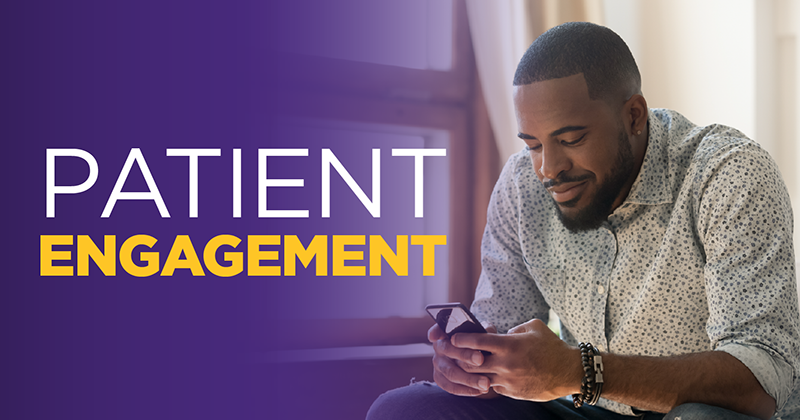In healthcare, patient engagement is no longer just a buzzword; it’s crucial to effective, patient-centered care. As the demand for accessible and personalized care grows, so does the need for innovative patient engagement software that can connect with patients meaningfully. Technology is paving the way for improved patient interactions, from virtual visits to customized health journeys. Here are seven patient engagement technology trends poised to shape the landscape 2024.
1. Personalized Patient Experiences
Today’s patients expect healthcare tailored to them, much like the personalized experiences they receive in other areas of life. In 2024, patient engagement software will leverage advanced technologies like AI and machine learning to deliver individualized care experiences. This personalization can manifest in customized reminders, tailored educational content, and relevant health tips based on each patient’s unique health profile and preferences.
AI algorithms analyze the patient’s data, recognize trends, and deliver personalized messages, which makes the patient feel supported and engaged in their health journey. Studies indicate that personalized communication can increase patient engagement by up to 30%, as patients feel more understood and cared for. This trend improves the patient experience and enhances treatment adherence and outcomes.
2. Enhanced Telehealth Integration
Telehealth has revolutionized patient access to care, and it’s here to stay. With telehealth usage remaining high, patient engagement technology in 2024 will focus on making telehealth even more integrated and accessible. Patients can book virtual appointments, receive reminders, and access post-visit notes—all within the same patient engagement platform.
Seamless integration means patients no longer need multiple apps or logins to navigate their healthcare. A single platform that combines telehealth with scheduling, reminders, and even follow-up messages makes it easier for patients to stay engaged. This level of integration is especially beneficial for rural or elderly patients who may have difficulty traveling for in-person visits.
3. Mobile-First Engagement
Smartphones are increasingly central to people’s daily tasks, and healthcare is no exception. In 2024, mobile-first patient engagement will be a priority, as providers aim to meet patients where they are. Patient engagement software optimized for mobile allows patients to manage appointments, access health records, and communicate with providers directly from their devices.
Patients prefer mobile platforms to manage healthcare tasks on the go conveniently. This trend opens doors to engaging patients through push notifications and real-time alerts, helping them stay on top of their health routines. Studies show that more than 80% of patients prefer digital interaction methods, especially mobile-friendly ones, which means mobile-first software is convenient and aligns with patient preferences.
4. Two-Way Communication with HIPAA-Compliant Texting
Two-way communication is a cornerstone of effective patient engagement, and texting has emerged as one of the simplest and most direct ways to keep patients engaged. In 2024, HIPAA-compliant texting will become a standard feature in patient engagement platforms, allowing patients and providers to communicate quickly and securely. This secure, two-way text messaging makes it easier for patients to ask questions, confirm appointments, or seek immediate guidance.
Consider a patient who has been prescribed a new medication and has questions about possible side effects. With HIPAA-compliant texting, they can contact their healthcare provider directly and receive a response in real-time, improving the patient’s confidence and peace of mind. Research shows that two-way texting can improve patient satisfaction by 25%, eliminating the need for lengthy phone calls or waiting for email responses.
5. Gamification in Health Tracking
Gamification is an emerging trend in patient engagement that taps into the power of incentives and rewards. In 2024, patient engagement software will incorporate gamified elements to motivate patients to stay engaged in managing their health. Gamification can be particularly effective for patients with chronic conditions, as it turns routine tasks into enjoyable challenges.
These points can accumulate toward rewards, creating a sense of achievement that encourages consistent health monitoring. This interactive approach keeps patients motivated and fosters a proactive approach to health management. Studies have shown that gamification can increase patient engagement by 20% to 25%, as patients are more likely to stay committed when their health tasks feel rewarding and goal-oriented.
6. Integration with Wearable Devices
Wearable devices, such as fitness trackers and smartwatches, are integral to healthcare monitoring. Patient engagement technology will further integrate with these devices in 2024, allowing patients to share real-time data on physical activity, heart rate, sleep patterns, and other health metrics with their providers.
This integration means that providers can access valuable health insights without patients needing to report data manually. Patients benefit from a continuous connection with their healthcare team, knowing their health is monitored even outside of appointments. Wearable integration supports a more proactive approach to care, helping patients stay engaged and motivated to maintain healthy habits. According to recent surveys, 74% of patients believe wearables improve their healthcare experience by making health tracking more accessible.
7. AI-Driven Insights for Preventive Care
AI is reshaping patient engagement by enabling healthcare providers to analyze large volumes of data and identify potential health issues early. In 2024, AI-driven insights will become a cornerstone of patient engagement software, helping providers take a more proactive approach to care. Through AI, healthcare organizations can identify patterns and trends in a patient’s health data that might go unnoticed.
For instance, AI algorithms can analyze data from wearable devices, medical records, and even social determinants of health to detect early warning signs of diabetes, hypertension, or heart disease. By identifying these patterns, providers can intervene before the condition progresses, offering preventive measures and keeping patients engaged in their care. This proactive approach improves patient outcomes, reduces hospital readmissions, and lowers healthcare costs. AI-driven patient engagement technology can improve health outcomes by up to 30%, making it a valuable tool for providers and patients.
Conclusion
Patient engagement technology is evolving rapidly, offering new and effective ways for healthcare providers to connect with patients. By integrating patient engagement software that focuses on accessibility, convenience, and personalization, providers can foster stronger relationships with patients and improve health outcomes. Patient engagement in healthcare is no longer optional; it’s essential for delivering quality care.
Contact Simple Interact for leveraging patient engagement software to enhance patient experience and streamline healthcare communication.



